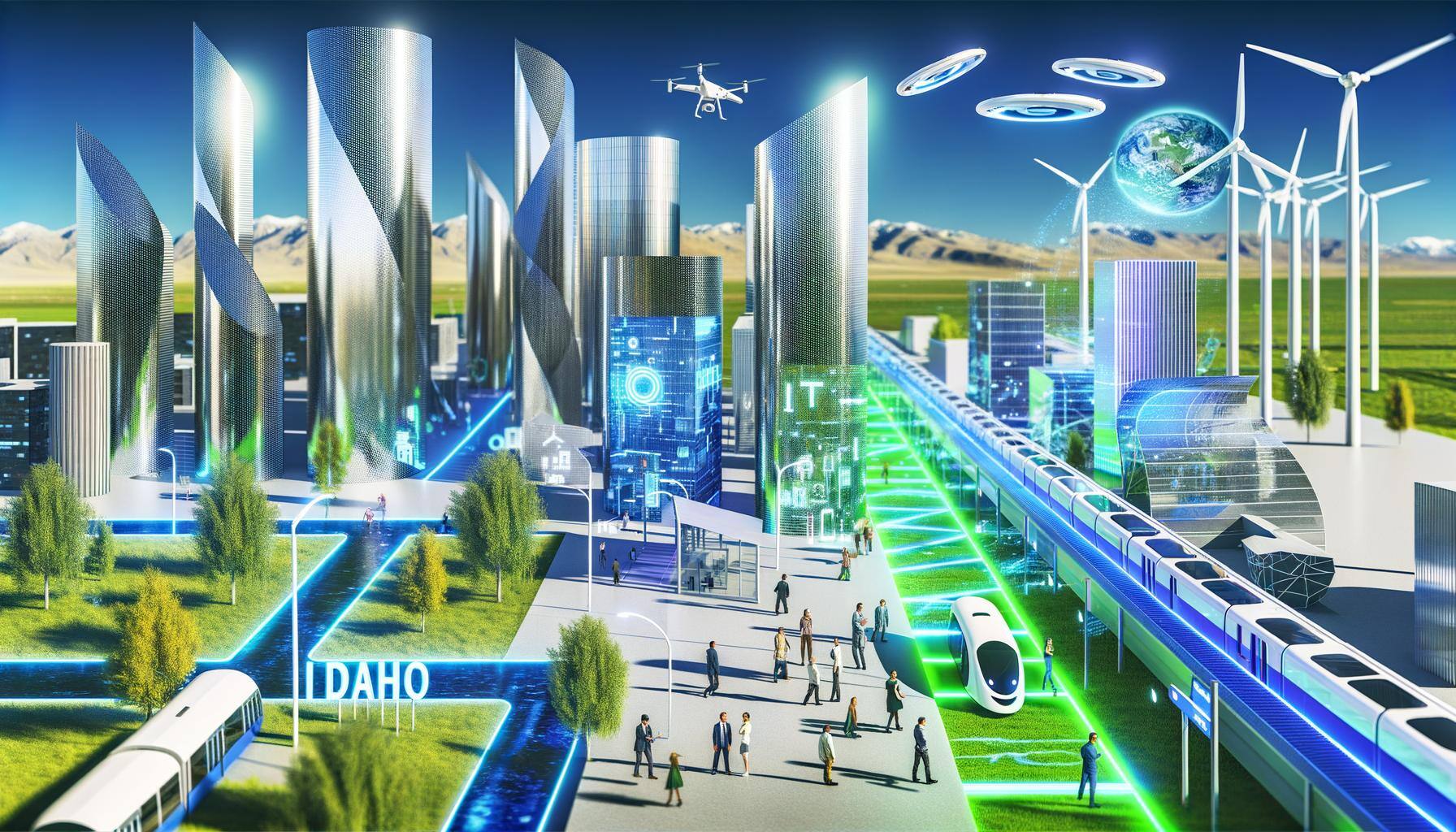Revolutionize Your Business with These Machine Learning Tips!
Machine learning (ML) isn't just a trendy term; it's a game-changing technology that can revolutionize businesses by boosting efficiency, offering...
5 min read
![]() Totalcare IT
:
Oct 7, 2024 10:00:00 AM
Totalcare IT
:
Oct 7, 2024 10:00:00 AM
We want to clarify the unique roles of IT governance and IT management. Although these terms are sometimes used interchangeably, they actually serve different functions and have distinct impacts on an organization’s success. This article will help clear up any confusion, offering insights on how to balance both effectively to enhance strategic value and boost operational efficiency.
IT governance is all about creating a solid framework and best practices to ensure that your IT systems and processes are perfectly in sync with your organization’s overall business strategy. Think of it as the guiding principles, policies, and controls that steer IT investments and decisions to support business goals, manage risks, and stay compliant with regulations.
The idea of IT governance actually stems from corporate governance. Just like corporate governance sets up rules and oversight to make sure a company’s management works in the best interest of its shareholders, IT governance lays down the structures and processes to align technology with business objectives.
Key Components of IT Governance:
In the early 2000s, organizations were navigating a rapidly changing landscape with the rise of the internet and digital technologies. A notable incident during this period was the dot-com bubble burst of 2000. Many technology companies, driven by the excitement of new opportunities, invested heavily in speculative ventures without solid governance frameworks. The financial losses that followed underscored the importance of having strong IT governance practices to effectively manage investments and mitigate risks.
IT management is all about handling the everyday operations and administration of IT resources and services. This means making sure IT services are delivered efficiently, including tasks like system maintenance, user support, and resource allocation.
The goal of IT management is to keep IT systems running smoothly, meeting performance expectations, and supporting the business’s daily activities. It’s essentially about managing IT infrastructure and services to ensure everything stays operational and continues to deliver value to users.
Key Components of IT Management:
Imagine the introduction of IT service management (ITSM) frameworks like ITIL (Information Technology Infrastructure Library) back in the late 1980s. ITIL was created to meet the growing need for standardized practices in managing IT services. Companies embraced ITIL to boost operational efficiency and service quality, highlighting the shift in IT management towards delivering dependable and efficient IT services.
IT governance focuses on aligning IT strategies with the overall goals of the business. This means setting long-term plans, crafting policies, and making sure that IT investments are in line with the company’s vision. For instance, if a business plans to enter new markets, IT governance will ensure that the technology investments are adaptable and scalable to support this expansion.
While IT governance takes a strategic approach, IT management zeroes in on the daily operations of IT systems. It’s all about keeping things running smoothly—whether it’s maintaining servers, applying software updates, or resolving helpdesk tickets quickly. IT management ensures that user issues are addressed promptly and that IT resources are managed efficiently, keeping everything in top-notch condition.
IT governance involves making significant decisions by senior executives and board members. These decisions focus on strategic investments, managing risks, and ensuring compliance. The governance team sets the direction and priorities for IT, aligning them with the business's overall goals.
IT management involves hands-on decision-making by IT managers and staff. This covers everyday tasks like troubleshooting technical problems, rolling out updates, and overseeing IT assets. These choices are more tactical and aimed at addressing immediate operational demands.
In IT governance, senior leadership holds the responsibility of making sure IT aligns with the company's business goals and meets all compliance standards. For instance, a Chief Information Officer (CIO) or virtual Chief Information Officer (vCIO) might oversee the approval of significant IT projects, ensuring they support the company's long-term strategies and objectives.
IT management is accountable for the effective delivery of IT services and support. This includes ensuring systems are operational, meeting service level expectations, and resolving operational issues. An IT Manager might be responsible for overseeing the day-to-day IT operations and ensuring user support is efficient.
IT governance employs strategic metrics to gauge how well IT is contributing to business goals. Important metrics could include Return on IT Investment (ROIT), alignment with business objectives, and the effectiveness of risk management. These metrics are essential for evaluating whether IT investments are providing the expected strategic benefits.
IT management zeroes in on metrics like system uptime, how quickly incidents are resolved, and user satisfaction. These metrics offer a clear picture of how well IT services are being delivered and help manage the everyday operations smoothly.
Understanding the difference between IT governance and IT management is vital for boosting business performance. IT governance makes sure that IT investments and strategies are in sync with business goals, helping to drive long-term success. On the other hand, IT management focuses on delivering IT services efficiently and effectively to support everyday operations.
Take, for example, the 2008 financial crisis. Numerous financial institutions faced major operational challenges due to poor IT governance and management. However, those with robust governance frameworks and efficient management practices were in a better position to handle the crisis and recover more swiftly.
Bringing IT governance and management into harmony boosts both efficiency and effectiveness. Think of IT governance as the strategic compass, guiding the direction, while IT management handles the nuts and bolts of daily operations. By syncing these two, organizations can hit their business targets while keeping IT systems running smoothly and reliably.
Prioritizing IT projects and resources is crucial for effective IT governance and management. By focusing on the strategic value and operational impact of each initiative, you can ensure that IT investments are aligned with business objectives while addressing the most critical operational needs. This way, your resources are put to their best use, driving both immediate and long-term success.
It’s crucial to clearly define who does what when it comes to IT governance and management. Senior executives should handle strategic decisions and oversight, while IT managers should concentrate on executing daily operations and delivering services.
Make sure your IT governance and management strategies work hand in hand. Aligning IT investments with your business goals is essential, but don't forget the importance of smooth daily operations. Open and consistent communication between your governance and management teams is crucial for achieving this harmony.
Regularly review your IT governance and management practices to keep them in sync with your business goals and operational needs. Make adjustments as needed based on performance metrics, evolving business conditions, and new technological advancements.
Grasping the differences between IT governance and IT management is vital for fine-tuning both strategic and day-to-day IT functions. Appreciate the unique roles each plays in driving your business forward and make sure they work seamlessly together.
Take a moment to assess your current IT governance and management practices to see if they are effectively aligned and integrated. If it looks like you could use some help with this, Contact TotalCare IT today.

Machine learning (ML) isn't just a trendy term; it's a game-changing technology that can revolutionize businesses by boosting efficiency, offering...

Cloud computing is a game changer for businesses. With its flexibility, scalability, and cost efficiency, cloud services can greatly enhance...

Artificial Intelligence (AI) isn’t just a futuristic concept confined to sci-fi movies—it’s here, integrated into our daily operations, often without...